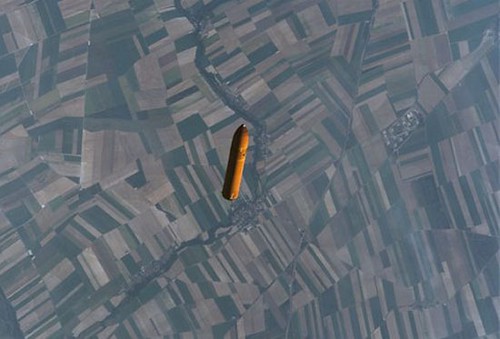Right now NASA is in the middle of the T-11 hours hold (more info on shuttle countdowns), a built-in hold of 13 hours 22 minutes, with the following main tasks to be accomplished:
- Weather and engineering briefings
- Pad debris inspection and closeout
- Flight crew equipment late stow
- Move rotating service structure to “park” position
- Activate the orbiter’s inertial measurement units and communications systems
- Perform ascent switch list
Sometime today, the official launch time was shifted one second, but the planned launch is still 3:47 p.m. EDT Friday which is in the middle of the ten minute launch window. During the planned T-9 minute hold, the shuttle managers will make adjustments to the launch time as required.
If you want the current mission minutiae, watch STS-134 – Countdown Status Briefing April 28.
The countdown will resume at T-11 hours (11:22 p.m. EST).
The weather forecast calls for a 70 percent chance of favorable conditions at launch time – so pray for mojo.
As a personal matter, I’m in Orlando now, in the suburban oasis which is the airport Holiday Inn.





















